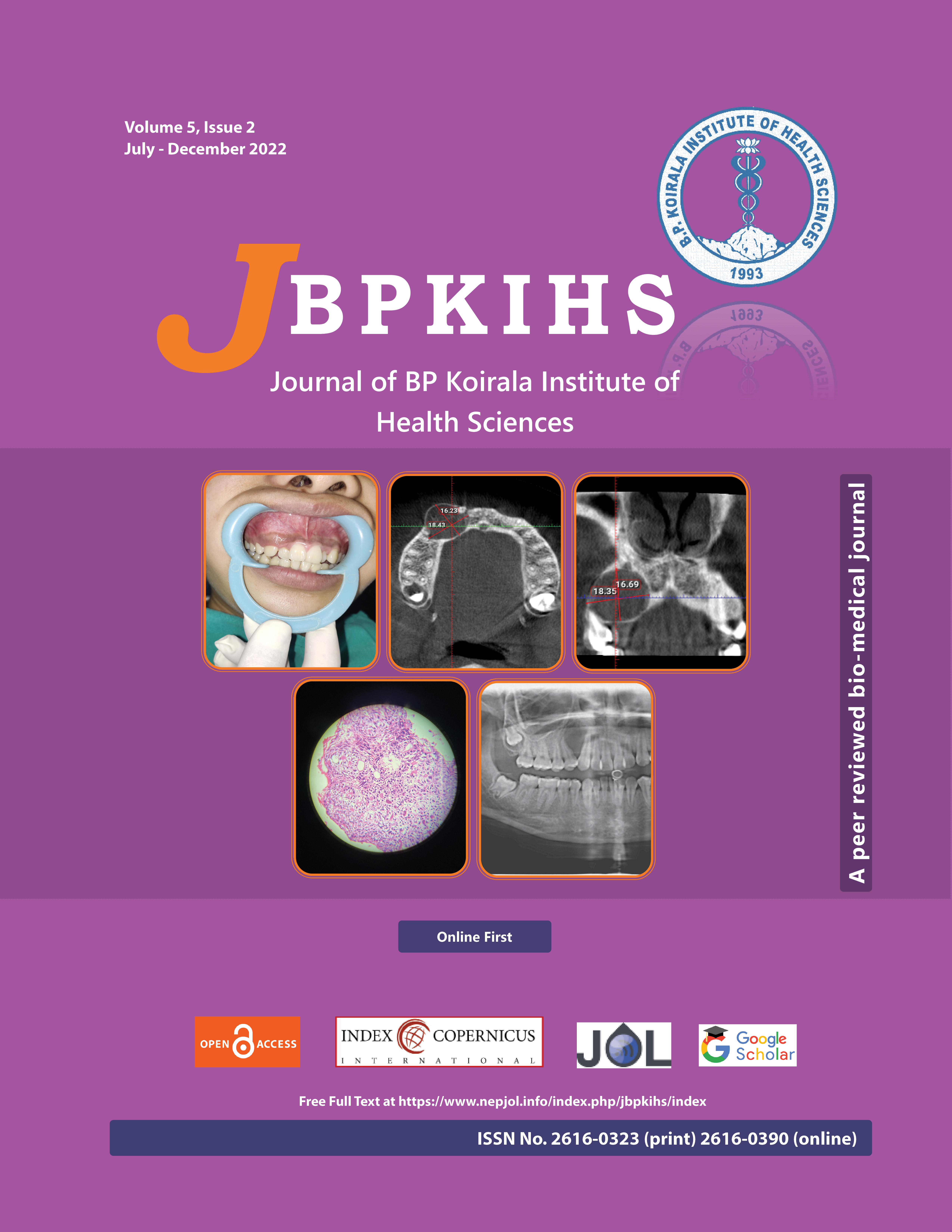Nutritional Status of Under Five Year Children Residing in Selected Wards of Barahachhetra Municipality, Sunsari, Nepal: a Cross-sectional Study
DOI:
https://doi.org/10.3126/jbpkihs.v5i2.42330Keywords:
Malnutrition, Nutritional status, Under five childrenAbstract
Background: The nutrition of under five children reflects a country’s health status. We aimed to assess the nutritional status of the under five year children of selected wards of Barahachhetra municipality, Sunsari.
Methods: In this cross-sectional study, we enrolled 167 under five year children in ward no. 4 and 5 of Barahachhetra municipality. Height/ length, mid- upper arm circumference (MUAC), weight and clinical signs of malnutrition were noted. The relevant information regarding the predictors of malnutrition was obtained from parents/ caregiver.
Results: Nearly half (47.9%) of the children were in the age group 25-59 months with almost equal gender distribution. About one-tenth of children (11.3%) had MUAC less than 12.5 cm, 20.4% of children were wasted, 47.2% were stunted and more than a quarter (29.6%) were underweight. The MUAC was significantly associated with per capita income (p = 0.01). Wasting was significantly associated with the age of the children (p = 0.005) and occupation of their father (p = 0.002). Underweight was significantly associated with their age (p = 0.007), ethnicity (p = 0.03), parents’ education (mother: p = 0.02, father: p = 0.002), parents’ age (mother: p = 0.04, father: p = 0.02) and fathers’ occupation.
Conclusion: Substantial number of under five year children were malnourished. One-fourth of the children were wasted, nearly half were stunted, and more than a quarter of the children were underweight. Malnutrition (as per MUAC) and stunting were higher among younger children (6-24 months) whereas wasting and underweight were higher among older children (25-59 months).
Downloads
Downloads
Published
How to Cite
Issue
Section
License
Copyright (c) 2022 Journal of BP Koirala Institute of Health Sciences

This work is licensed under a Creative Commons Attribution-NonCommercial-NoDerivatives 4.0 International License.
This license enables reusers to copy and distribute the material in any medium or format in unadapted form only, for noncommercial purposes only, and only so long as attribution is given to the creator.




